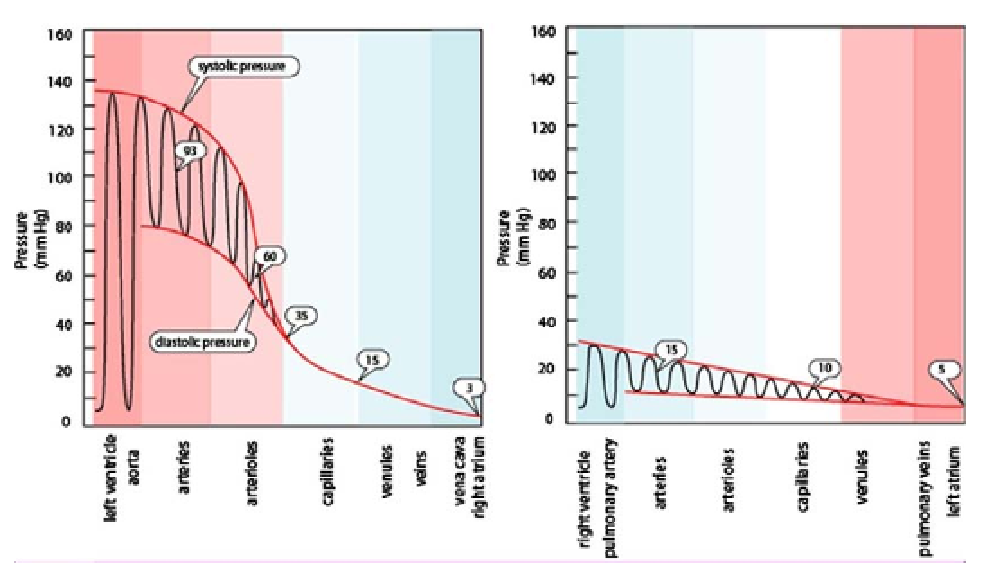Biomedical Engineering Reference
In-Depth Information
FIGURE 14.34
Pressure reduction across the systemic circulation (left side) and the pulmonary circulation
(right side) indicating the continual pressure gradient that drives blood flow along the circulatory systems.
developed” is the boundary layer. Thus, for Poiseuille flow, the entire flow field is viscous
dominated. This is manifested by the parabolic flow profile just mentioned. However, in
reality, the fluid flow in the aorta is not truly parabolic but is more of a blunt profile. The
flow profile becomes more rounded as the boundary layer grows from the outside of the
vessel toward the center.
From a momentum transport perspective, the outside of the blood vessel, where the
boundary layer is growing, is said to undergo convective deceleration, while in the center
of the vessel, the flow is undergoing convective acceleration. Thus, there is a transfer of
fluid momentum from the outside of the vessel toward the inside until finally the entire
flow pattern is completely rounded and parabolic. The growth of the boundary layer is
shown in Figure 14.35 for laminar flow, which is flow of a fluid that is smooth and orderly.
The boundary layer thickness is given by the symbol
, whose value is quite small during
“plug” flow at the entrance to a blood vessel but that slowly grows during viscous flow
until it equals the vessel radius. At that point, the velocity profile is fully parabolic and
the flow is said to be “fully developed.” This is the point where the Poiseuille assumptions
are now valid. Note that the pulsatile nature of blood flow in an artery has been neglected
in this analysis and in Figure 14.35.
When the fluid flow is turbulent, the flow profile is more chaotic. This results in more fluid
mixing from the areas of higher-velocity flow at the center with lower-velocity flow at the
periphery of the vessel (toward the blood vessel wall). Thus, turbulent flow has more mixing
and therefore more momentum transport between the center of the vessel and the wall. In
laminar flow, the fluid shear stress is highest at the wall and zero at the center. Even so,
d

